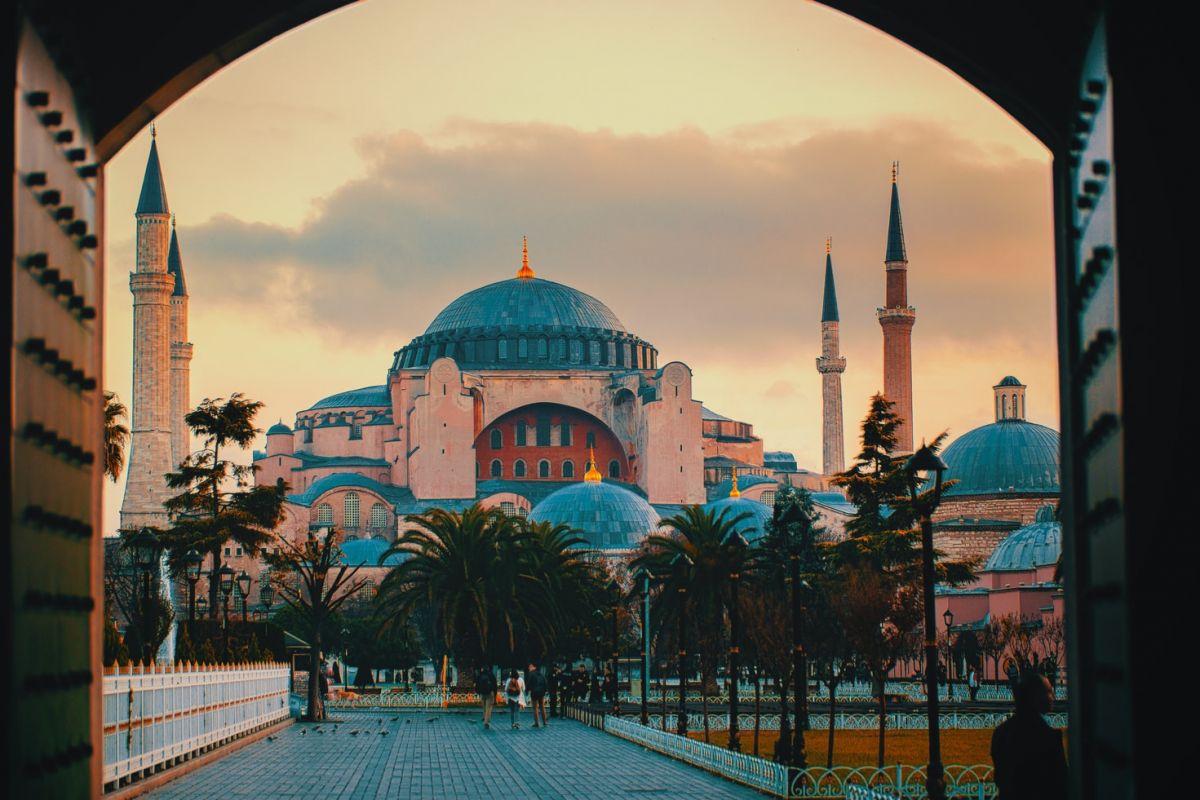The Hagia Sophia's Temple, now an Istanbul mosque, was initially built as the Church of Divine Wisdom. It was the highest-ranking temple in the Byzantine Empire, the cathedral of the patriarch, and a place of prayer and coronation for Byzantine emperors.
It was founded by Emperor Justinian I the Great in the 6th century, and according to legend, he received plans for the expansion of the temple from a host of angels. It is one of the most beautiful religious buildings of the first millennium AD, a manifestation of the changing styles in art and culture that united two great religions.
It was consecrated in 360, during the reign of Emperor Constantius II. It was built next to the Great Palace, the principal imperial residence.
This church had a wooden ceiling, columns and an entrance facing west. Unfortunately, it burned down in 404 CE. Temple was rebuilt in 415 CE and then was destroyed again in 532 CE.
It was then that Emperor Justinian instructed two Greek specialists, the architect Isidore of Miletus and the engineer and mathematician Antemius of Tralles to design and begin the church's construction. The emperor himself is said to have taken an active part in the planning of the church.
Justinian's goal was to rebuild the Roman empire with territorial and political power. During his forty-year reign, he led Byzantium to power, and his reign is considered one of the most important periods in the history of the empire.
Justinian influenced the development of law, establishing the division between civil and criminal law, and he built one of the most remarkable pieces of architecture, the Hagia Sophia.
The basilica type is characteristic for the Christian architecture of the Latin circle and the central type for the Greek Christian.
The central part of the church is a space with a square plan, located in the nave and delimited by four robust pillars. The square is inscribed with a circle, which is the base of the dome spanning the church's main space.
The dome is supported by four pendentives (a kind of vault in the shape of a spherical triangle) - a solution typical of Byzantine architecture. Thanks to them, the massive dome with a diameter of 31 m (101 ft) and the height from the floor to the highest point - 55.6 m (182,5 ft) - optically loses its weight and becomes delicate.
From the east and west, below the dome, two half-domes adjoin the walls of the nave, supporting the central dome and covering the remaining space. Additionally, the pillars supporting the columns are reinforced with massive buttresses.
The parts of the main nave covered with semi-domes contain four semicircular niches. The side naves are covered with cross vaults; above them is a gallery called an empora. Several mosaics have been preserved in the upper gallery, a place traditionally reserved for the empress and her court.
Contrary to the main nave, the side ones are shaded.
Mainly green marble was used for the columns. Many elements were decorated with gold, silver, ivory and glittering stones.
The dome's interior was covered with gold mosaics, and large figures of cherubs were placed in the pendentives.
In 1453, the Ottoman Turks captured Constantinople, and Sultan Mehmed II went to Hagia Sophia for the first Friday prayer after capturing the city. They proceeded to convert the temple into a mosque.
Some of the mosaics and frescoes were removed, and the rest were painted over. Eight wooden medallions hanging at the base of the column come from the Ottoman period. They bear the names of Allah, Mohammed, the first four caliphs: Abu Bakr, Umar, Uthman and Ali, and Mohammed's two grandsons: Hasan and Hussein.
In the sixteenth century, two colossal marble vessels were brought from Miletto, which probably stored oil for lamps.
They date back to the 6th century and are about 7 meters long. Byzantine sources claim they are made of wood from Noah's Ark.
In April 2022, the doors were vandalized by unknown assailants.
The column is called the "column of weeping," the "column of wishing," or the "column of sweat." Legend has it that the column became damp since Gregory Thaumaturgus, a bishop and confessor, appeared near it in 1200.
Touching the dampness is said to cure many diseases.












